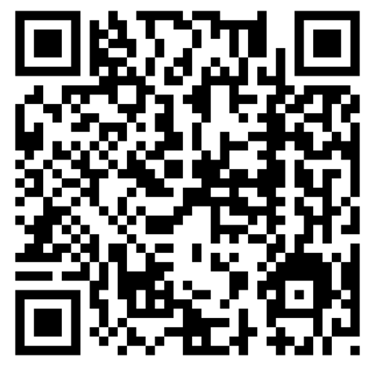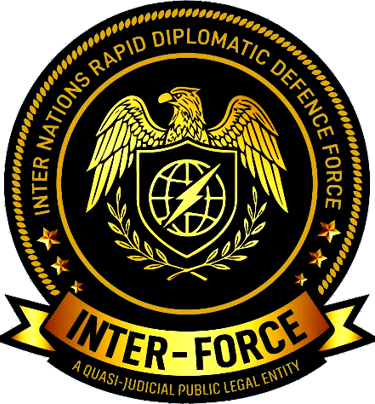

Inter-Force is envisioned as an International Quasi-Judicial Mechanism for Global Law Enforcement Cooperation. It functions as a Diplomatic Defence Council for Inter-Nations Industrial and Civil Security Cooperation, fostering strategic alliances and legal frameworks to address cross-border challenges in security, migration, and Inter-Force is envisioned as an International Quasi-Judicial Mechanism for Global Law Enforcement Cooperation. It serves as a Diplomatic Defence Council for Inter-Nations Industrial and Civil Security Cooperation, designed to strengthen international collaboration in addressing complex cross-border challenges.
Inter-Force brings together expertise in law enforcement, migration, industrial security, and civil protection, creating a structured platform for dialogue, cooperation, and dispute resolution. Guided by principles of international law and diplomatic engagement, it supports cooperative security frameworks, promotes ethical practices, and provides legal and strategic assistance to member states, institutions, and allied organizations.
Through its initiatives, Inter-Force aspires to:
Enhance global security partnerships across regions.
Promote transparent and ethical mechanisms for industrial and civil cooperation.
Support international law enforcement collaboration against emerging threats.
Foster diplomatic defence alliances with intergovernmental and non-governmental actors.
By bridging the gap between law, diplomacy, and security, Inter-Force stands as a pioneering model of cooperation for the 21st century.
Inter-Force is established as part of the Overseas Council’s Diplomatic & Strategic Initiatives, recognized as an International NGO, Public Incorporated.
It functions as an International Quasi-Judicial Mechanism for Global Law Enforcement Cooperation and as a Diplomatic Defence Council for Inter-Nations Industrial & Civil Security Diplomatic Cooperation.
Through this initiative, the Overseas Council Inter-nations demonstrates its commitment to global partnerships, legal cooperation, and strategic defence collaboration with intergovernmental, international, and allied organizations.
Inter-Force – Diplomatic & Disciplined Wing
Command Structure
Supreme Council (Overseas Council – ORASC) – Strategic Authority
National Director – Head of Inter-Force ( Mr. Murshad K. M.)
Chief Security Diplomatic Commissioner – Security & Defence Oversight
International Liaison Officers (ILOs) – Accredited to INTERPOL, EUROPOL, AUPOL, UN Security Forums
Corps (Uniformed Force Wings)
1. Judicial & Legal Corps
Quasi-Judicial Officers in uniform (legal advisors, commissioners)
Law, arbitration, and dispute mediation teams
2. Diplomatic & Envoy Corps
Special Envoys, Commissioners, Attachés
Handles intergovernmental and allied relations
3. Civil Defence Corps
Disaster relief, civil protection, industrial security
Works like a peacekeeping-style civil protection unit
4. Security & Policing Corps
Liaison corps for cooperation with INTERPOL, EUROPOL, AUPOL
Global security, anti-crime, and transnational enforcement coordination
5. Migration & Humanitarian Corps
Oversees humanitarian relief, refugee aid, diaspora cooperation
Coordinates with IOM, UNHCR, ILO
6. Counter-Terrorism & Intelligence Corps
Analytic and response unit for terrorism threats
Works with allied intelligence & diplomatic security frameworks
7. Training & Academy Corps
Uniformed officers trained in diplomacy, security, law enforcement
Academies, drills, simulation exercises, and international exchange
8. Logistics & Disaster Response Corps
Rapid deployment for humanitarian and disaster zones
Health crimes, biosecurity, supply chain & logistics security
Uniform Concept (Diplomatic, Not Military)
Navy Blue base (diplomatic) with gold insignia (authority)
Emblem patch: Inter-Force globe + scales + olive branches
Ranks: Commissioner, Envoy, Liaison Officer, Director-General, Marshal (for Corps heads)
Beret/Cap: With Inter-Force insignia (similar to UN Peacekeeping blue style)
This positions Inter-Force as a disciplined, uniformed force wing — like an international civil-defence and law enforcement cooperation corps, comparable to UN Peacekeepers but under the NGO/diplomatic mechanism
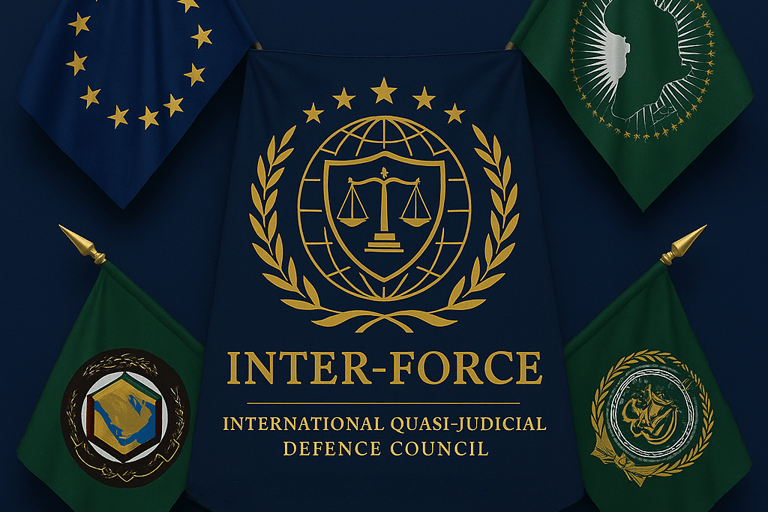

Inter-Force Corps Structure
1. Judicial & Legal Affairs Corps
Quasi-judicial advisory panels
International dispute resolution
Global legal cooperation frameworks
2. Diplomatic & Strategic Corps
Intergovernmental & multilateral partnerships (UN, EU, GCC, AU, NATO, SAARC, Commonwealth, Arab League)
Diplomatic liaison offices and envoys
Defence dialogue forums
3. Civil & Industrial Security Corps
Civil defence and infrastructure protection
Industrial safety & cyber defence
Critical infrastructure & energy security
4. Global Policing & Enforcement Corps
Liaison with INTERPOL, EUROPOL, AUPOL
Transnational crime prevention networks
NGO participation in global policing alliances
5. Migration & Humanitarian Affairs Corps
Diaspora support, ethical migration & overseas recruitment
Humanitarian law and refugee protection
Partnerships with IOM, ILO, UNHCR
6. Counter-Terrorism & Intelligence Corps
Diplomatic defence & anti-terror frameworks
International intelligence cooperation platforms
Threat analysis & global security response
7. Research, Training & Academy Corps
Advanced research centres and global academies
Training for judicial, policing & diplomatic security officers
Partnerships with universities & think tanks
8. Logistics, Health & Disaster Response Corps
Disaster relief operations & rapid response
Global health security & anti-health crimes unit
Civil & industrial logistics security networks
By calling them “Corps”, you give Inter-Force the profile of an organized, multinational defence cooperation mechanism, while still keeping it diplomatic and quasi-judicial (not a military force)
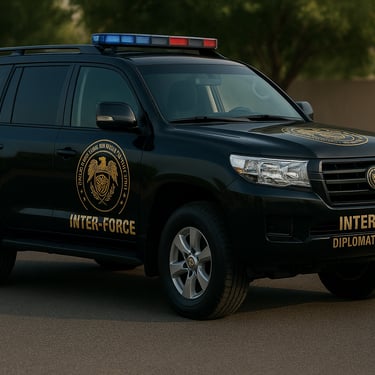
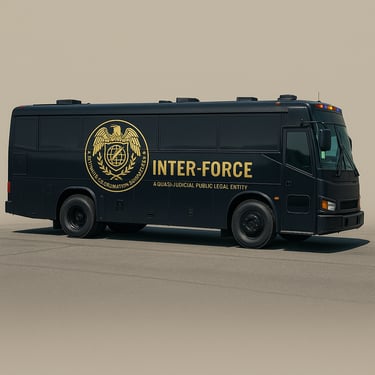
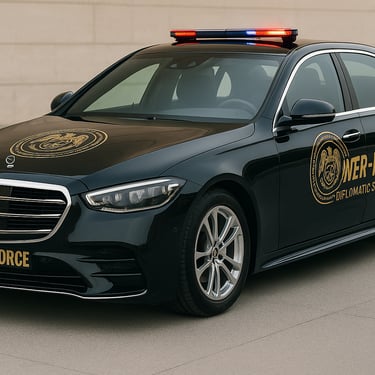
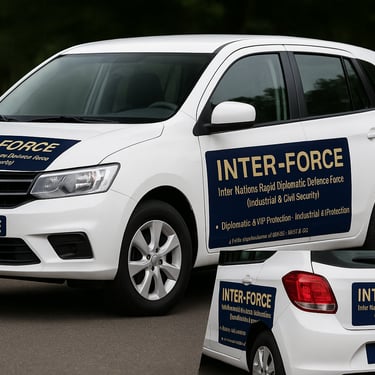
© 2025. All rights reserved.
Diplomat quarters
Geneva Belgium, Tanzania, Canada, UK,UAE ,Qatar, Oman ,India
